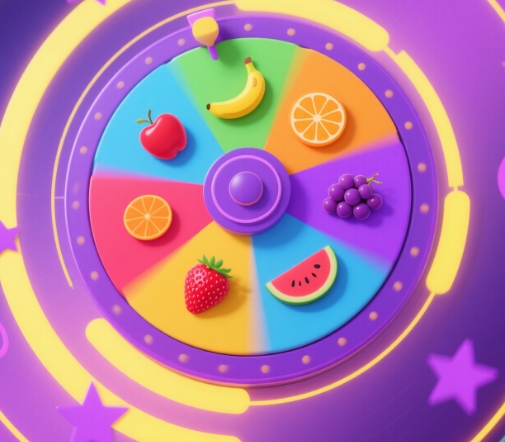In the dynamic world of web-based spin the wheel games, delivering a seamless and visually captivating experience is paramount. At the heart of these interactive experiences lies HTML5 Canvas, a powerful tool for rendering complex animations and graphics. However, as game developers strive to create more intricate wheel designs—with detailed textures, vibrant colors, and smooth rotations—suboptimal canvas rendering can lead to lag, frame drops, and frustrated users. This article dives deep into actionable strategies to optimize canvas rendering for wheels, ensuring your spin the wheel game not only looks stunning but also performs flawlessly across devices.
The Critical Role of Canvas Performance in Wheel Games
Canvas rendering performance directly impacts user engagement. A wheel that spins jerkily or takes milliseconds to update creates a disjointed experience, driving users away. Modern browsers handle canvas well, but the complexity of wheel animations—constant rotation, dynamic content updates, and interactive states—puts pressure on the rendering pipeline. Whether you’re building a simple prize wheel or a high-stakes casino-style game, inefficient rendering can bottleneck performance, especially on mobile devices with less processing power.
Key Challenges in Wheel Rendering
- Continuous Redraw Overhead: Wheels often require frequent redraws during spins, especially when highlighting segments or updating scores.
- Complex Geometry: Detailed wheel designs with curved edges, gradients, and shadow effects increase computational load.
- Event Handling Overhead: Matching user interactions (clicks, touch events) with spinning dynamics adds to the processing load.

Strategies to Optimize Canvas Rendering for Wheels
1. Leverage Layered Rendering for Static vs. Dynamic Content
One of the most effective techniques is separating content into static and dynamic layers. The wheel’s base structure—segments, colors, and text—rarely changes during gameplay, while the spinning animation and interactive highlights are dynamic. By rendering static elements once and reusing them in subsequent frames, you reduce redundant calculations.
// Example: Separate static wheel rendering from animation loopconst staticCanvas = document.createElement('canvas');const staticCtx = staticCanvas.getContext('2d');renderStaticWheel(staticCtx); // Draw base wheel onceconst animationCanvas = document.createElement('canvas');const animationCtx = animationCanvas.getContext('2d');function animateWheel(rotationAngle) { animationCtx.clearRect(0, 0, canvas.width, canvas.height); // Draw static layer first animationCtx.drawImage(staticCanvas, 0, 0); // Draw dynamic elements (e.g., highlight, shadow during spin) renderDynamicEffects(animationCtx, rotationAngle);}2. Optimize the Animation Loop with requestAnimationFrame
The native requestAnimationFrame (RAF) API synchronizes animation cycles with the browser’s refresh rate, ensuring smooth frame rates (ideally 60 FPS). Unlike setTimeout or setInterval, RAF reduces energy consumption and aligns with the browser’s rendering pipeline, minimizing frame drops. When updating wheel rotations, always wrap animation logic in RAF and avoid heavy computations within the callback.
3. Simplify Paths and Reduce Geometry Complexity
Complex canvas paths (curves, gradients, and shadows) are computationally expensive. Simplify wheel segment shapes where possible:
- Use radial gradients instead of linear gradients for circular wheels to reduce shader complexity.
- Precompute static shadows using CSS filters instead of drawing them manually with ctx.shadowBlur.
- For text on wheel segments, render text to an off-screen canvas first and reuse the bitmap, avoiding repeated font calculations.
4. Implement Object Pooling and Frame Skipping
During fast spins, updating every pixel every frame is unnecessary. Object pooling reuses graphic objects (like highlight markers) instead of creating and destroying them, reducing garbage collection overhead. Frame skipping—rendering only when the wheel’s rotation changes significantly—can also improve performance. Use a threshold to determine when a redraw is needed:
let lastRotation = 0;const redrawThreshold = 5; // Degrees of rotation change needed to trigger redrawfunction updateWheel(rotation) { if (Math.abs(rotation - lastRotation) > redrawThreshold) { renderWheel(rotation); lastRotation = rotation; }}5. Harness Hardware Acceleration with WebGL (When Applicable)
For highly complex wheels with 3D effects or advanced textures, consider WebGL—a low-level API that offloads rendering to the GPU. While Canvas 2D is easier to use, WebGL can handle more vertices and textures efficiently. Libraries like Three.js simplify WebGL integration, allowing you to create hardware-accelerated 3D wheels without mastering low-level shader programming.
6. Optimize Memory Usage and Garbage Collection
Frequent creation of temporary objects (e.g., new Image objects or Path2D instances) triggers garbage collection, causing frame drops. Reuse objects whenever possible:
- Cache image assets and wheel textures in a global object.
- Recycle canvas contexts for off-screen rendering instead of creating new ones.
- Avoid unnecessary data structures during animation loops.
Testing and Monitoring Performance
No optimization strategy is complete without rigorous testing. Use browser dev tools:
- Chrome DevTools Performance Tab: Profile rendering bottlenecks and identify long tasks.
- FPS Counter: Monitor frame rate during intense spins to ensure it stays above 50 FPS.
- Memory Monitor: Check for memory leaks caused by uncollected canvas resources.
Future-Proofing with Modern Techniques
As browsers evolve, stay ahead with emerging technologies:
- Canvas 2D Image Bitmaps: Use createImageBitmap() to decode images asynchronously, reducing main thread blocking.
- WebAssembly: Offload heavy rotation calculations (e.g., physics engines) to WebAssembly for near-native performance.
- Adaptive Rendering: Detect device capabilities and switch between Canvas 2D and WebGL dynamically, ensuring optimal performance on both high-end and mobile devices.
Conclusion: Deliver a Smooth Spin with Spin the Wheel
Optimizing canvas rendering for wheels is a blend of smart architecture, efficient coding, and leveraging browser capabilities. By separating static and dynamic content, mastering the animation loop, simplifying geometry, and embracing hardware acceleration, you can create spin the wheel games that are both visually stunning and technically robust. Remember, every millisecond of performance gain enhances user satisfaction, making your game more engaging and competitive.
At Spin the Wheel, we specialize in crafting high-performance, visually striking wheel-based experiences that delight users and drive results. Whether you’re building a promotional giveaway or a complex gaming application, prioritizing canvas rendering optimization ensures your wheel spins smoothly, every time. Ready to take your game to the next level? Explore our solutions and start creating unforgettable interactions today.